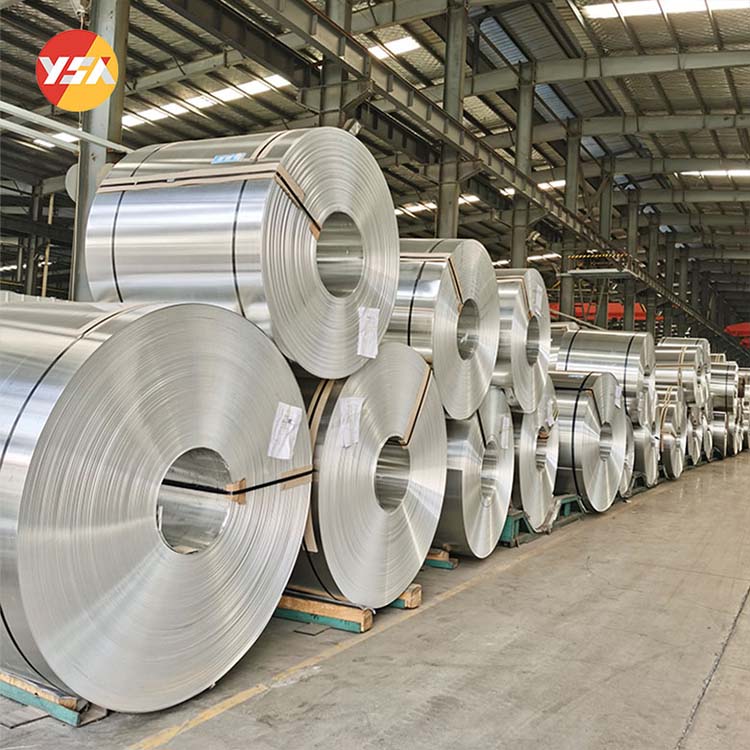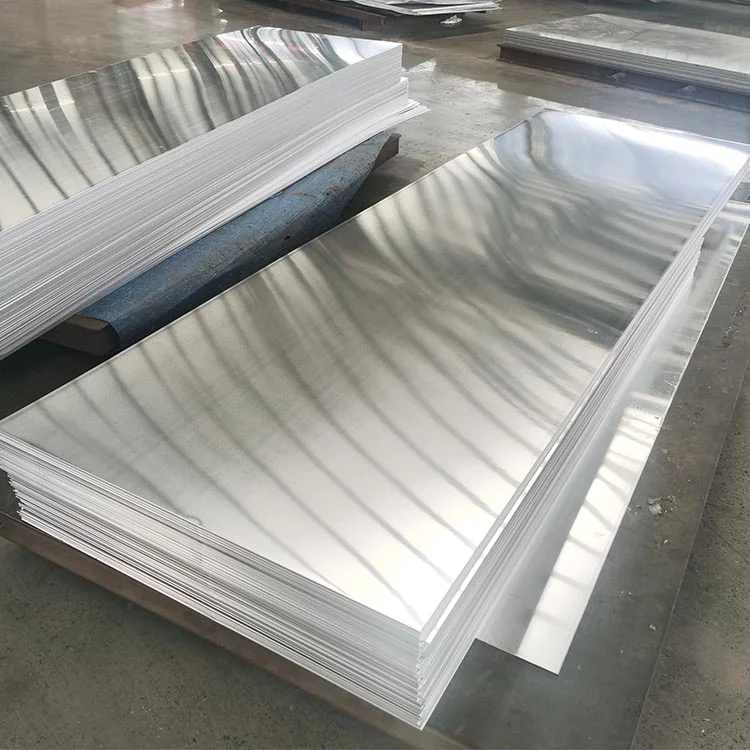¿Qué es el papel de aluminio para barcos?
Aluminum foil boat crafting is a DIY endeavor blending challenge with creativity, emerging as a popular activity combining creative exploration with hands-on enjoyment. The material selection strategically harnesses aluminum’s inherent advantages: exceptional malleability coupled with ultra-lightweight properties.
Aluminum foil boats are cost-effective, easily accessible creations that balance aesthetic appeal with practical versatility, serving multiple purposes across various activities. This step-by-step guide in this article walks you through mastering the foil boat crafting process.
First, understand aluminum foil boat benefits and key features. Next, design the hull’s structure and purpose, pick suitable materials and tools, then adjust buoyancy and stability. Finally, customize your boat with a personal touch.
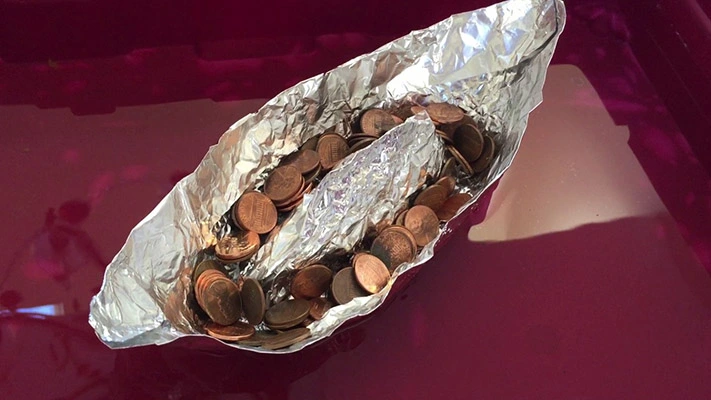
I. Comprender la flotabilidad
A. Definición y explicación de la flotabilidad
La flotabilidad es la fuerza ascendente que ejerce un fluido, como el agua, sobre un objeto sumergido en él. Es el resultado de la diferencia de presión entre las superficies superior e inferior del objeto. Cuando la fuerza de flotación es mayor o igual que el peso del objeto, éste flota.
B. El principio de Arquímedes y su importancia para la construcción de barcos
Principio de Arquímedesformulado por el matemático griego Arquímedes, afirma que un objeto sumergido en un fluido experimenta una fuerza de flotación hacia arriba igual al peso del fluido que desplaza. Este principio es crucial para entender cómo flotan los barcos, incluidos los de papel de aluminio.
C. Factores que afectan a la flotabilidad
Several factors influence the buoyancy of an aluminum foil boat. The amount of water pushed aside by the boat’s hull, the boat’s own weight, and how weight is spread out inside the boat all affect how well the boat stays afloat. By considering these factors, you can design and construct a boat that achieves optimal buoyancy and stability.
II. Recopilación de materiales y preparación
A. Recogida de papel de aluminio
Para empezar su aventura de hacer barcos de papel de aluminio, reúna una cantidad suficiente de papel de aluminio. Busque un rollo de papel de aluminio de cocinadisponible en la mayoría de los hogares. Asegúrate de que tienes suficiente lámina para construir el casco del barco y cualquier otro elemento estructural.
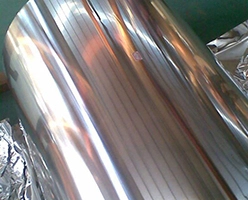
B. Elección del tipo y grosor de lámina adecuados
Al seleccionar el papel de aluminio para la fabricación de barcos, tenga en cuenta su grosor. El papel de aluminio más grueso (papel de aluminio grueso) tends to be more rigid and provides better structural integrity for the boat.
However, if you prefer a more lightweight and flexible boat, you can opt for thinner foil. Experiment with different thicknesses to find the balance between durability and maneuverability that suits your needs. In general, we recommend using aluminum foil that is approximately 0.016 to 0.04 inches (0.4 to 1 mm) thick.
C. Garantizar una superficie limpia y plana para la construcción
Antes de empezar a construir su barco de papel de aluminio, asegúrese de tener una superficie limpia y plana sobre la que trabajar. Esto garantizará que el papel de aluminio no se ensucie ni se llene de residuos, y facilitará el proceso de plegado y moldeado. Una mesa o encimera lisa sería una superficie ideal para construir el barco.
III. Diseñar su barco
A. Consideración de la finalidad y las necesidades de la embarcación
Antes de empezar a construir tu barco de papel de aluminio, piensa en su finalidad y requisitos. ¿Lo va a construir para una carrera, una decoración flotante o un experimento científico? Comprender el uso previsto del barco le ayudará a tomar decisiones de diseño que se ajusten a sus objetivos.
B. Esbozo y planificación del diseño de la embarcación
Tómate tu tiempo para esbozar y planificar el diseño de tu barco antes de empezar a doblar el papel de aluminio. Tenga en cuenta la forma, el tamaño y la disposición generales de la embarcación. Un diseño sencillo de casco rectangular o triangular es un buen punto de partida para los principiantes. Hacer bocetos le ayudará a visualizar la embarcación y a realizar ajustes antes de pasar a la fase de construcción.
C. Consideraciones estructurales para la estabilidad y la distribución del peso
Para garantizar la estabilidad y una distribución adecuada del peso, piense en los elementos estructurales de su barco de papel de aluminio. Considera la posibilidad de añadir paredes laterales o compartimentos para aumentar la flotabilidad y evitar vuelcos. Distribuya el peso uniformemente colocando los elementos más pesados, como pequeñas pesas o monedas, en la parte baja del casco de la embarcación. Esto ayudará a mantener el equilibrio y la estabilidad en el agua.
IV. Construcción del casco
A. Crear la base del barco con papel de aluminio
Empieza a construir tu barco de papel de aluminio creando el casco, que forma la base de la embarcación. Corta un trozo de papel de aluminio lo bastante grande como para que quepa el tamaño deseado del barco. Colócalo plano sobre una superficie limpia, asegurándote de que no tenga arrugas ni pliegues.
B. Técnicas de plegado para dar forma al casco
Utilice técnicas de plegado para dar al papel de aluminio la forma deseada. Dobla el papel a lo largo de los bordes para crear una "U" poco profunda, parecida a la parte inferior de un barco. Asegúrate de que los pliegues son nítidos y seguros para mantener la integridad estructural del casco. Puedes utilizar los dedos o una regla para conseguir pliegues limpios y rectos.
C. Refuerzo del casco para aumentar su resistencia
To reinforce the hull and add strength to your aluminum foil boat, consider doubling the layers of foil. Put another piece of foil on top of the first layer and fold the edges over to hold them together. This will provide increased durability and resistance to potential punctures or tears while the boat is in water. Ensure that the folds align properly and that the two layers are securely attached to each other.
V. Añadir elementos estructurales
A. Construcción de los costados y la proa del barco
Una vez que hayas construido el casco, es hora de añadir los laterales y la proa a tu barco de papel de aluminio. Corta trozos más pequeños de papel de aluminio y dóblalos para crear paredes a lo largo de los laterales del barco. Pega estas paredes a los bordes del casco, asegurándote de que estén bien dobladas y unidas. Del mismo modo, crea una forma puntiaguda para la proa doblando un trozo de papel de aluminio y fijándolo a la parte delantera del casco.
B. Técnicas para crear paredes y compartimentos
Si desea incorporar compartimentos o secciones dentro de su barco de papel de aluminio, puede utilizar técnicas de plegado adicionales. Doble el papel de aluminio verticalmente para crear divisiones o tabiques en el interior de la embarcación. Esto ayudará a distribuir el peso uniformemente y mejorará la estabilidad. No olvide fijar bien los pliegues para mantener la integridad de los compartimentos.
C. Fijación de vigas o tirantes de soporte adicionales
Depending on how big or shaped your foil boat is, you might need to add extra supports or reinforcements to make it sturdier. Cut narrow strips of foil and fold them to create beams that span across the width of the boat. Attach these beams to the walls or hull to provide extra reinforcement. This will help prevent the boat from flexing or bending excessively while it floats.
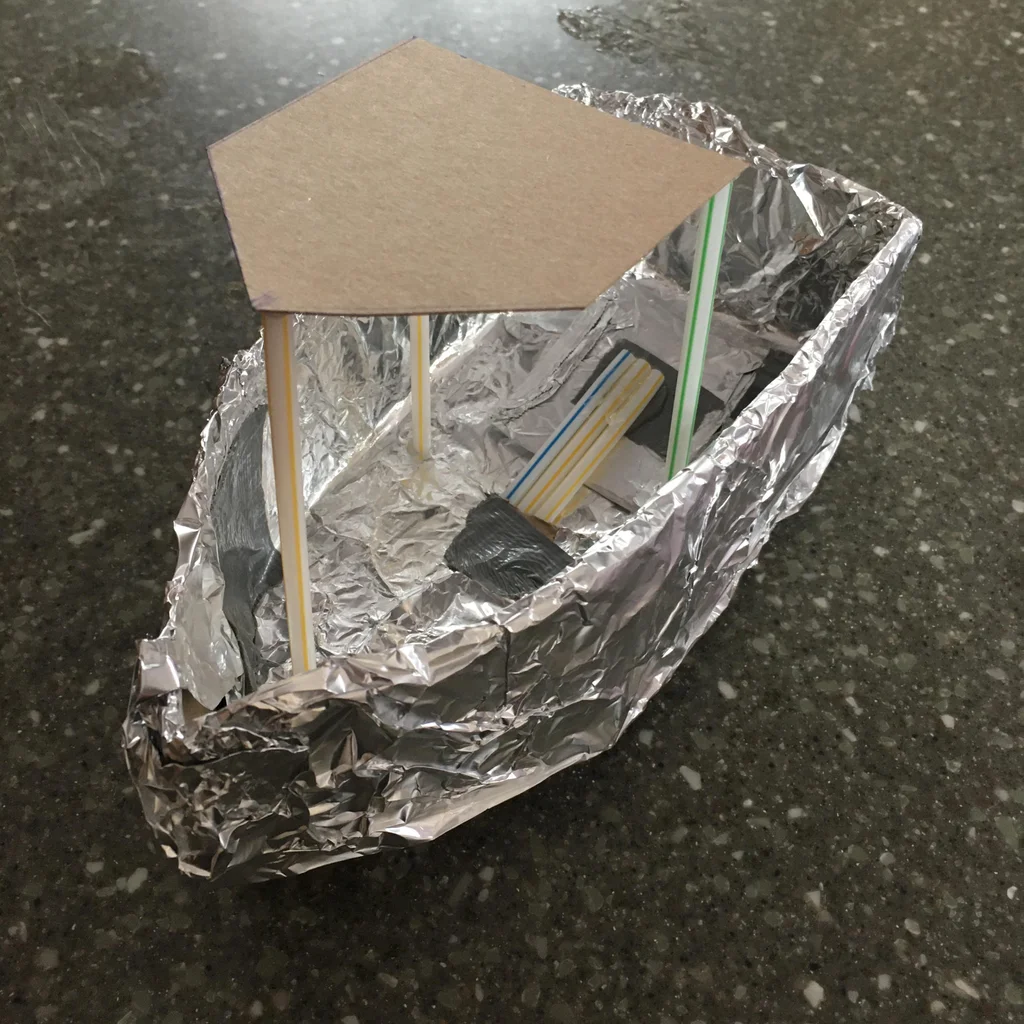
VI. Toques finales
A. Smoothing and refining the boat’s surface
After constructing the basic structure of your aluminum foil boat, take some time to smooth and refine its surface. Use your hands or a soft cloth to gently press and smooth out any wrinkles or imperfections in the foil. This will give your boat a cleaner and more polished appearance.
B. Ensuring water tightness and preventing leaks
To ensure that your aluminum foil boat remains watertight and prevents leaks, pay attention to the seams and folds. Press along the edges and folds to create a tight seal. If you notice any gaps or areas where water might seep in, reinforce them with additional folds or small patches of foil. A watertight boat will float better and keep your spirits high during experiments or races.
C. Adding decorative elements if desired
If you want to make your foil boat more creative and personal, consider adding some decorations. Use colored markers or adhesive stickers to create designs, patterns, or even a name for your boat. Just remember to keep the added decorations lightweight and avoid obstructing the boat’s functionality or stability.
VII. Testing and Adjusting
A. Conducting a float test in water
Once you have completed the construction of your aluminum foil boat, it’s time to put it to the test. Fill a container or basin with water, making sure it is deep enough to fully submerge the boat without touching the bottom. Gently place the boat in the water and observe its floating behavior.
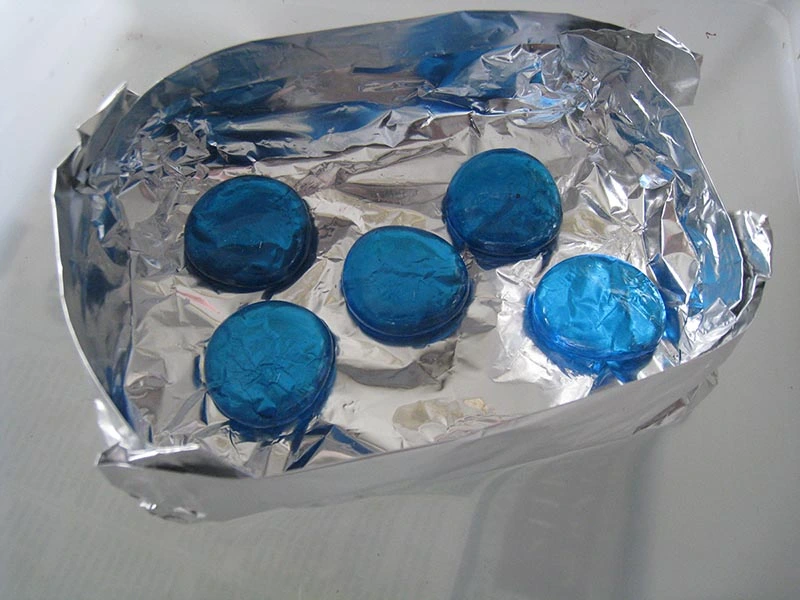
B. Observing the boat’s stability and balance
As your aluminum foil boat floats, observe its stability and balance. Does it float level or does it tilt to one side? Is it stable or does it easily tip over? Check for any uneven areas or parts that might need adjusting or strengthening to enhance the boat’s performance.
C. Making necessary adjustments for optimal performance
Based on what you saw during the float test, make any changes needed to improve how well your aluminum foil boat works. This might involve redistributing weight, reinforcing weak areas, or modifying the design slightly. By iteratively testing and adjusting, you can achieve a well-balanced and seaworthy vessel.
VIII. Safety Considerations
A. Wearing appropriate safety gear
When engaging in any hands-on activity, including aluminum foil boat-making, it’s important to prioritize safety. Make sure to wear proper safety gear, like protective gloves, to avoid cuts or scrapes when handling aluminum foil or sharp objects.
B. Supervising children during the boat-making process
If children are involved in the boat-making process, ensure they are supervised at all times. Provide age-appropriate guidance and assistance to ensure their safety and prevent any potential hazards. Emphasize the importance of following safety guidelines and handling materials with caution.
C. Avoiding sharp edges or potentially hazardous materials
While constructing your aluminum foil boat, be mindful of sharp edges that could cause injury. Fold the foil carefully to avoid creating sharp points or edges. Also, avoid using any harmful materials when building the boat, especially if you plan to test it in water.
Alternative Boat-Making Techniques
While aluminum foil is a popular choice for boat-making, there are alternative materials you can explore. Consider experimenting with materials like plastic wrap, wax paper, or even recycled materials such as cardboard or plastic bottles. Each different material has its own unique properties and challenges, helping you learn more about buoyancy and boat design.
Beyond the traditional hull designs, you can also experiment with different boat shapes and configurations. For example, you can create a catamaran-style boat by connecting two hulls with a bridge or try a pontoon-style boat with multiple buoyant sections. These variations can offer different levels of stability and maneuverability, providing an opportunity for further exploration and creativity.
If you want to take your aluminum foil boat-making to the next level, consider incorporating propulsion systems. You can attach a small fan or paddle wheel to the back of your boat and experiment with different methods of propulsion, such as wind power or manual paddling. This adds an exciting element to the project and allows you to explore the engineering principles of boat propulsion.
Resumen
Building an aluminum foil boat is a fun and instructive exercise that teaches you about buoyancy, boat design, and construction concepts. You may build a well-designed and seaworthy vessel by learning the fundamentals of buoyancy and following the methods indicated in this guide. Remember to be creative, to experiment with different materials and ideas, and to have fun as you embark on your aluminum foil boat-making adventure.

